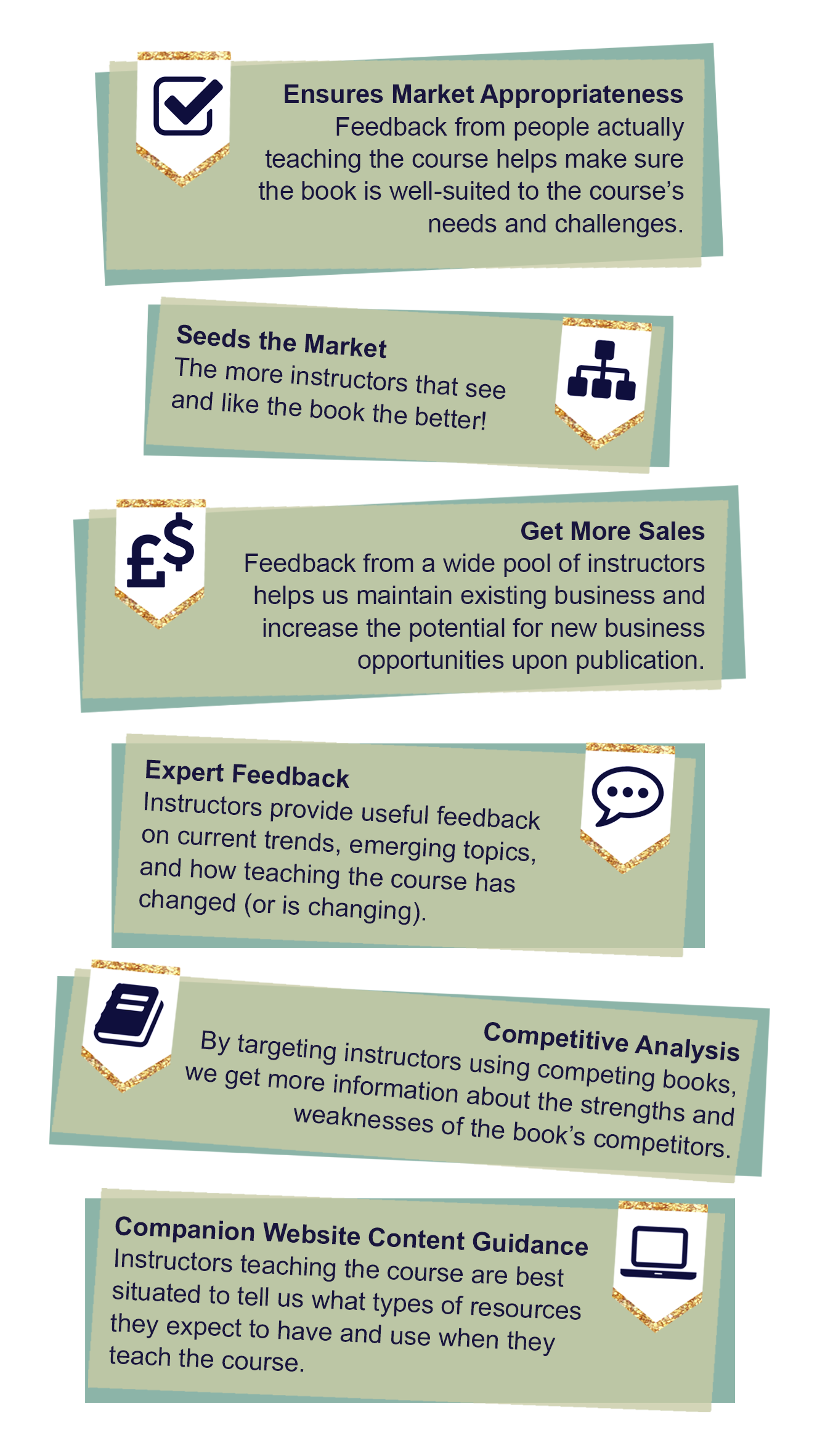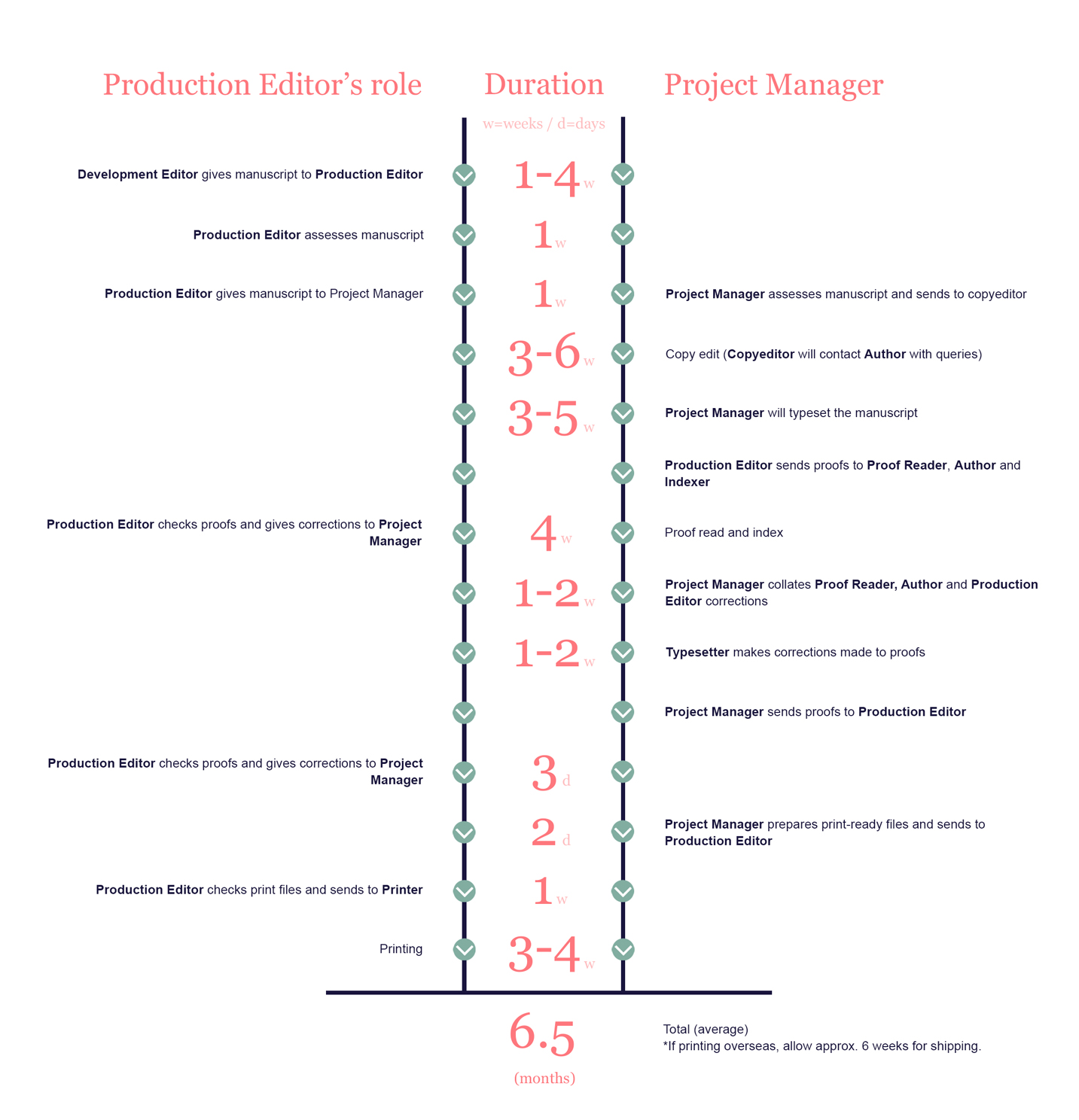Batch Reviewing
What is batch reviewing?
Batch reviewing is how we solicit feedback from instructors on the content of a book while it is being written or revised. It’s a time-tested hallmark of Development, designed to ensure that each book we work on meets the needs and challenges of the course as much as possible.
Rather than have the manuscript reviewed in full when it’s finished, we review chapters in a number of smaller batches along the way. This offers critical feedback that will inform the ongoing revisions, while also providing valuable information about the course and market that enables us to retain current users and seed new business.
How many chapters are reviewed in each batch?
Most often, we review books in 3 batches of chapters, depending on the book’s length. We try to include 4-8 chapters in each batch, which may be sequential or non-sequential. For an edited volume (or books with multiple authors), batches should represent contributions from different authors or editors. The specific chapters that make up each individual batch can be worked out in discussion with the Development Editor.
Some projects—particularly first editions—begin with a “Batch A” review of one or two sample chapters. The Development Editor will read this sample and provide feedback. Generally, this will not address content so much as readability, pedagogy, chapter length, formatting/signposting, and consistency in author voice. It’s a useful first step to ensure your book is on the right course!
How are the reviewers selected?
On average, Development aims for 10-15 reviewers per batch review.
The Development Editor will research institutions where the course is currently being taught, paying particular attention to big departments with large enrollments. Potential reviewers will also come from editorial recommendations, adopters of previous editions and/or competing books, sales reports, and online searches. Development will also ensure that we find the appropriate segment of the market—whether that be geographic, student level, etc.
The batch review process both helps to guide ongoing revisions and seed adoptions for your final book.
What kind of feedback can I expect?
Instructors will be sent a detailed review questionnaire to complete, asking them for in-depth opinions on the chapters, as well as for information about the course content and the specific challenges of teaching it. The goal is to make sure that the final, revised manuscript meets those challenges as best as possible.
The Development Editor will then collate all of the review feedback into a single document, summarizing the responses and looking for points of consensus among the reviews. This consensus will inform our recommendations. For example, if 6 out of 10 instructors suggest that additional pedagogy or learning tools are needed, or that coverage of certain topics is superfluous to the book’s overall scope, the Development Editor will discuss this in the batch report.
Some of the recommendations may be specific to individual chapters, while some may help guide the writing of chapters in subsequent batches. This feedback is designed to offer as much useful information as possible, and a practical guide to strengthening the book overall.
Why is batch reviewing important?
There are a number of important reasons why Development takes this review approach:

In summary, batch reviewing is one of the most effective ways to provide our authors with market feedback. It's an invaluable tool in guiding revisions, retaining current users, and seeding new adoptions and sales of our books!





